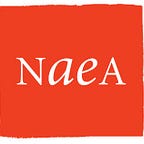Viewfinder Issue 7 — Institutional Change: Letter from the Editors
Sara Egan, Keonna Hendrick, and Kabir Singh, Viewfinder Editorial Board
In this third issue of Viewfinder devoted to the intersection of social justice and museum education, we explore ways in which individuals can leverage their skills and networks in order to affect change across their museums.
Often, education staff members drive museums’ efforts to address their histories of bias and of perpetuating oppressive systemic injustices such as colonialism and racism. Educators have direct contact with the public that museums serve, giving them a front-row seat to the ways in which institutional, interpersonal, and internalized biases and prejudices impact current and potential audiences. Moreover, educators possess the skills necessary for facilitating challenging discussions among colleagues and stakeholders, developing self-awareness and empathy, and recruiting accomplices in the work of creating equitable, inclusive institutions.
In this issue, educators who are at the center of institutional transformation write about how they have spearheaded shifts in organizational culture. As all of the authors point out, social justice work must begin by challenging dominant narratives and perspectives within the museum itself, before carrying that work forward into interactions with visitors.
Stacey Mann, Saralyn Rosenfield, and Amelia Wiggins of the Delaware Art Museum write about their process to institute a series of trainings focused on shifting the “institutional body language” of the Museum to better represent their community (Jennings, 2013).
Priya Frank of the Seattle Art Museum shares the journey of the institution’s equity team, which has made its mark on the Museum’s strategic plan, values, and the daily work done by staff across the Museum.
Wendy Ng and J’net AyAyQwaYakSheelth of the Royal Ontario Museum engage in a dialogue about their work of decolonizing the museum by centering Indigenous perspectives and knowledge in their department.
We hope that readers will consider ways in which their own actions have impacts across their institutions, and will aspire to create the types of deep, sustainable changes described by these authors. Any institution-wide efforts must be supported by leadership and permeate decision-making from the board, to the director, to the frontline staff, but as these authors demonstrate, educators can lead the way to making museums more equitable for all.
— The Viewfinder Editorial Board
Sara Egan
Sara Egan is a museum educator whose work is grounded in constructivism and the use of discussions about works of art to affirm all voices. She connects Boston students and teachers with the Isabella Stewart Gardner Museum as School and Youth Programs Manager. Sara holds a BA from Vassar College and an Ed.M. from the Harvard Graduate School of Education, and is an adjunct professor of art at Simmons College.
Keonna Hendrick
Keonna Hendrick is a cultural strategist whose teaching, writing, and strategic planning promote critical thinking, expand cultural perceptions, and support self-actualization. She currently serves as School Programs Manager at the Brooklyn Museum, where she leads a department of skilled and empathetic educators in designing learning experiences that invite learners to expand their understanding of themselves and the world. Her writing has appeared in numerous publications including the Journal of Museum Education (2017), Multiculturalism in Art Museums Today (2014) and the Journal of Folklore and Education (2016). As the co-creator of multicultural critical reflective practice, a professional development model, Keonna continues to provide professional development to educators in museums and classrooms nationally, including ArtsConnection, The Museum of Modern Art, Whitney Museum of American Art, National Art Education Association, and The Solomon R. Guggenheim Museum
Kabir Singh
Kabir Singh is Associate Educator, Family Programs at the Skirball Cultural Center, where he develops and teaches programs for intergenerational audiences. He is a writer and Los Angeles native and has been teaching in museums since 2008. Kabir is dedicated to making museums more inclusive, accessible, and welcoming. He serves as the National Art Education Association (NAEA) Museum Education Division Pacific Regional Representative-Elect and has previously served on the board of Museum Educators of Southern California (MESC). Kabir holds an EdM in Arts in Education from the Harvard Graduate School of Education and a BA in Art History from Columbia University.
Reference
Jennings, G. (2013, June 29). The empathetic museum: institutional body language. Retrieved from http://www.museumcommons.com/2013/06/the-empathetic-museum-institutional.html
